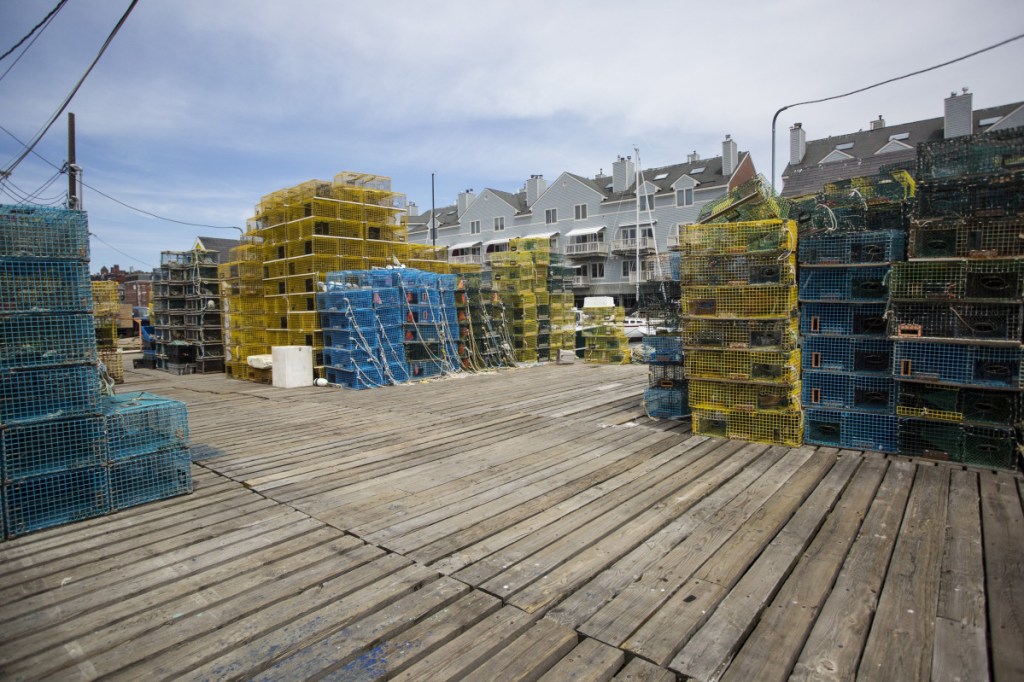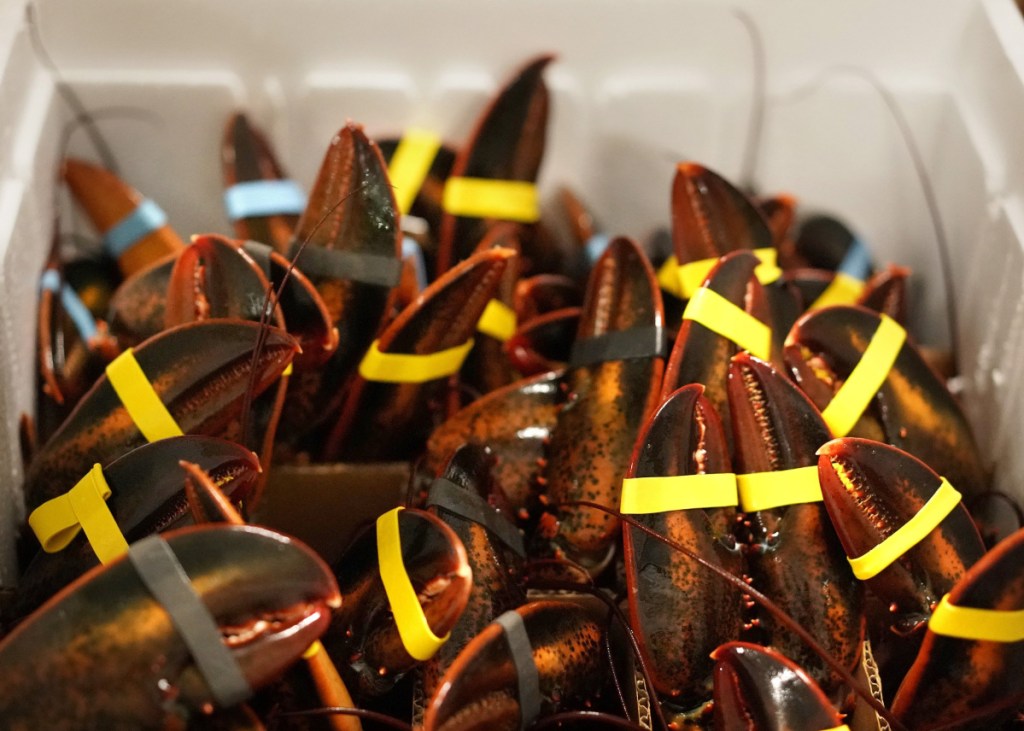ROCKPORT — The state lobster harvest grew in size and value in 2018, but not enough to return Maine’s signature industry to the record-breaking highs of the 2012-2016 lobster boom.
Maine lobstermen landed about 119.6 million pounds of lobster last year valued at about $484.5 million, according to new state data released Friday at the annual Maine Fishermen’s Forum.
“The value of this year’s catch reflects the dedication and sacrifices of the men and women who work on the water and those who make sure this quality product gets to market,” Gov. Janet Mills said before the forum.
Lobster was the most valuable species harvested in the U.S. in 2015, 2016 and 2017, according to federal officials, and Maine landings accounted for about 80 percent of that value each year.
The 2018 harvest is the sixth biggest in Maine history. It is almost 8 percent more than the 110.8 million pounds landed in 2017, but still almost 10 percent less than the 132.5 million pounds landed in 2016.
The dock value of the 2018 harvest is $50.1 million or 11.7 percent more than the $433.8 million paid out the year before, but still 10.3 percent below the record-breaking $540.4 million paid out in 2016.
The price that fishermen netted for their lobster also increased in 2018, climbing 14 cents or 3.6 percent from the $3.92 per pound earned at the dock in 2017 to last year’s average of $4.05 per pound.
Kristan Porter, the president of the Maine Lobstermen’s Association, said the per-pound increase should be taken with a grain of salt, as price varies so much from one Maine port to another.
But he interpreted it as a sign that consumer appetite for lobster was high.
“Demand for lobsters will always stay strong,” Porter said Friday.
Although not as big as the record-breaking highs of a few years ago, industry leaders say the growth is proof that the days of plenty are not over for Maine’s most lucrative fishery.
And the growth wasn’t limited to just one part of Maine’s 3,500 miles of coastline. State lobster biologist Kathleen Reardon noted that all of Maine’s seven fishing zones saw year-over-year growth in their 2018 landings.
Maine’s western-most lobster fishing zone, which ranges from the New Hampshire border east to Cape Elizabeth, reported its highest landings in a decade, Reardon said.
She noted that December and January, two months when Maine traditionally didn’t land lobster, are showing significantly higher landings. The December 2018 haul was the second highest December ever, she said.
The news was greeted with relief by an industry that was rocked by the U.S.-China trade war in 2018 and is girding itself to face even bigger bait and regulatory challenges this year.
The U.S. industry lost its biggest overseas market in July when China put a 25 percent import tariff on U.S. lobster that sent Chinese buyers into the waiting arms of Canadian lobster dealers.
In 2019, the industry will face a severe bait crunch because of slashed herring quotas and possible gear overhauls, trap reductions and closures as regulators hunt for ways to protect the endangered right whale.
Some believe the biggest threat is the long-term impact of rising ocean temperatures, which is blamed for disrupting the traditional settling pattern of baby lobsters and driving away the plankton they like to eat.
A group of federal, state and private researchers published a study last year that predicted rising ocean temperatures will shrink the Gulf of Maine lobster population by 40 to 62 percent over the next 30 years.
The state disputed the study’s findings, but the grim prediction created an ominous backdrop for the later announcement of severe volume and value declines of the 2017 lobster harvest.
Industry leaders hope the 2018 lobster catch is proof that last year’s volume dip was a one-time fluke caused by a bad winter and an early molt, not the start of a long-term population decline.
Still, Maine is taking steps to prepare for an eventual decline. It has boosted its science budget, hired another lobster biologist and created a research collaborative to monitor, manage and protect the stock.
While it may be the most valuable, lobster is just one of Maine’s many commercial fisheries. In total, Mainers earned $637.2 million from selling their fish at the dock, up 20 percent from last year’s $529 million.
The 2018 elver harvest, or glass eel landings, was a high point in financial success, if not regulatory oversight, as its $2,366 per pound average broke the previous record of $2,172 in 2015 by almost 10 percent.
Last year, Maine regulators had to shut down the second-most valuable fishery early because illegal sales put the state at risk of exceeding its allotted quota. In spite of this, the fishery’s value still grew 78 percent.
The state’s other high volume fisheries netted the following at the dock:
3.6 million pounds of herring valued at $16.6 million; 258,642 pounds of soft-shell clams brought in at $12.9 million; 9,191 pounds of elvers valued at $21.7 million; and 239,428 pounds of scallops brought in $5.9 million.
Penelope Overton can be contacted at 791-6463 or at:
poverton@pressherald.com
Twitter: PLOvertonPPH
Send questions/comments to the editors.






Comments are no longer available on this story